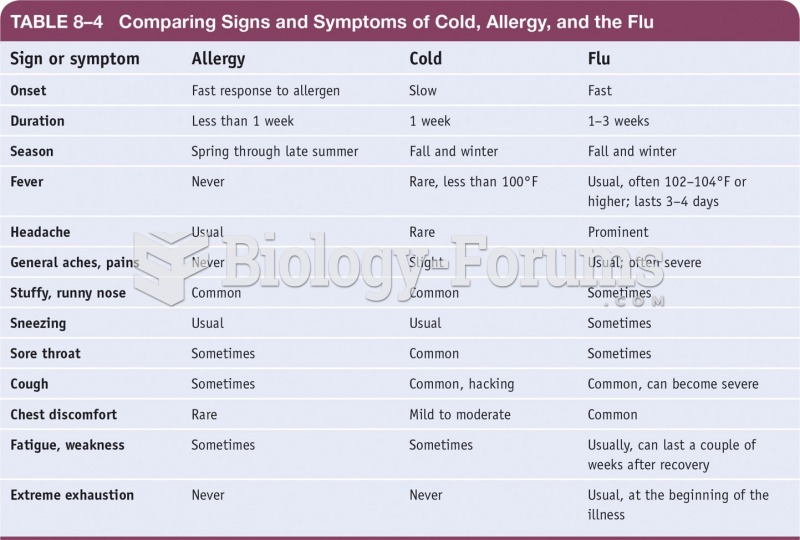Answer to Question 1
The prevalence of food allergy, especially peanut allergy, is on the rise, however. Reasons for an increase in peanut allergy are not yet clear, but possible contributing factors include genetics, food preparation methods (roasting peanuts at very high temperatures makes them more allergenic), and exposure to medicinal skin creams containing peanut oil.
Answer to Question 2
Hyperactive children have trouble sleeping, cannot sit still for more than a few minutes at a time, act impulsively, and have difficulty paying attention. These behaviors interfere with social development and academic progress. The cause of hyperactivity remains unknown, but it affects about 11 percent of young school-age children. To resolve the problems surrounding hyperactivity, physicians often recommend specific behavioral strategies, special educational programs, and psychological counseling. If these interventions are ineffective, they may prescribe medication.
Research on hyperactivity has focused on several nutritional factors as possible causes or treatments. Parents often blame sugar. They mistakenly believe that simply eliminating candy and other sweet treats will solve the problem. This dietary change will not solve the problem, however, and studies have consistently found no convincing evidence that sugar causes hyperactivity or worsens behavior. Such speculation has been based on personal stories. No scientific evidence supports a relationship between sugar and hyperactivity or other misbehaviors.
Food additives have also been blamed for hyperactivity and other behavior problems in children, but scientific evidence to substantiate the connection has been elusive. Limited research suggests that food additives such as artificial colors or sodium benzoate preservative (or both) may exacerbate hyperactive symptoms such as inattention and impulsivity in some children. Additional studies are needed to confirm the findings and to determine which additives might be responsible for specific negative behaviors. A Food and Drug Administration (FDA) review determined that evidence linking color additives to hyperactivity is lacking. The FDA did not rule out the possibility that some food additives, including food colorings, may aggravate hyperactivity and other behavioral problems in some susceptible children.







